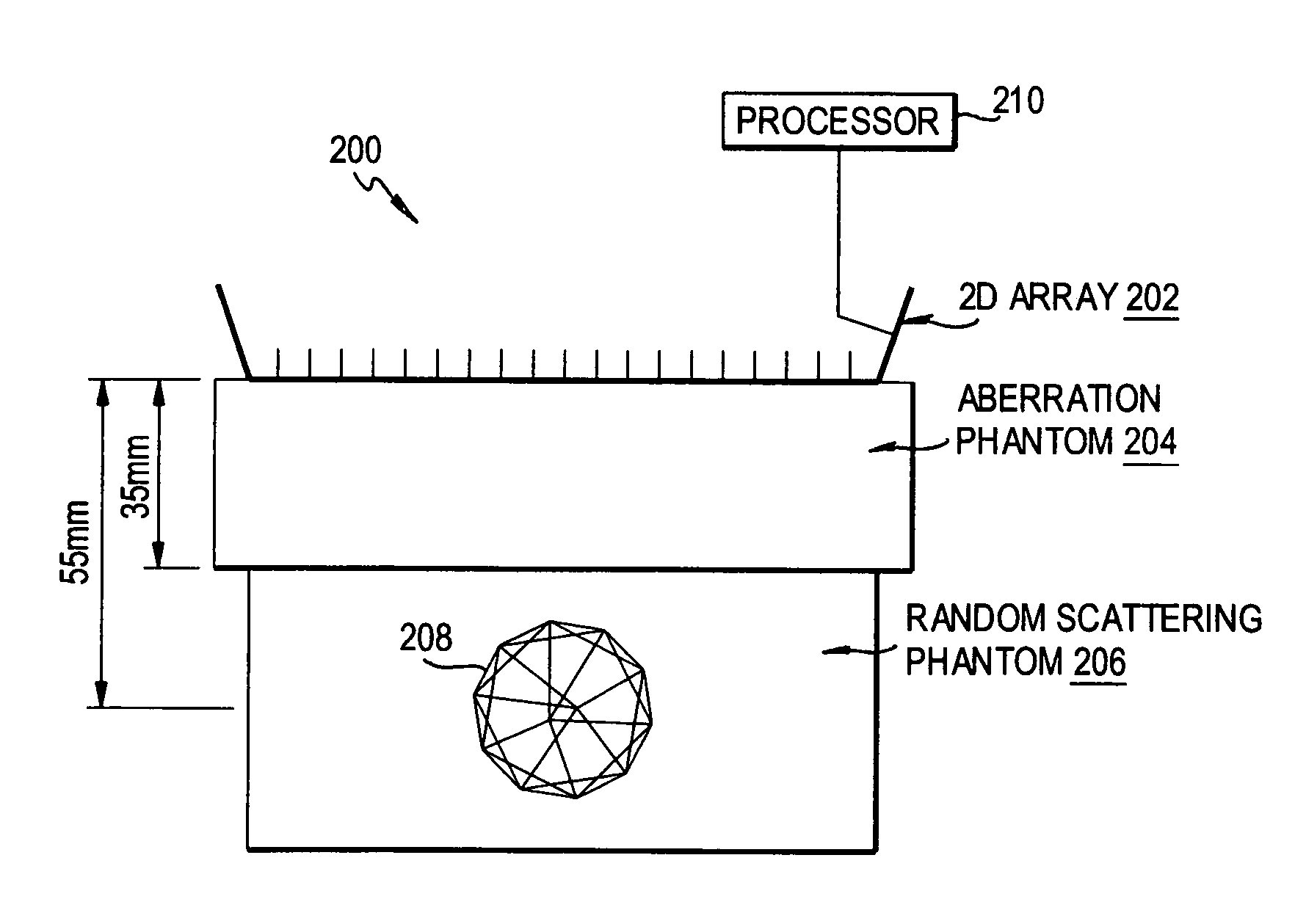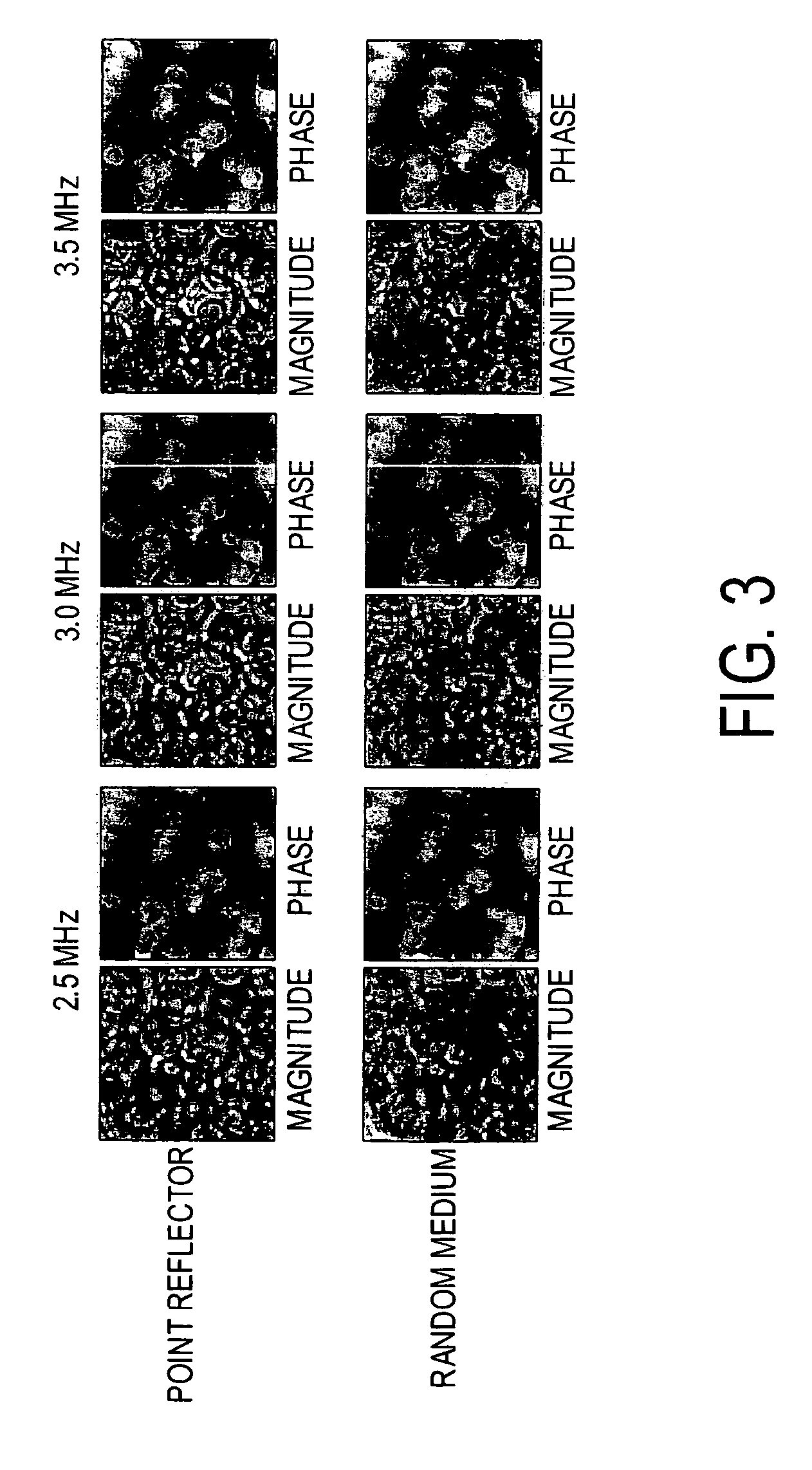Statistical estimation of ultrasonic propagation parameters for aberration correction
- Summary
- Abstract
- Description
- Claims
- Application Information
AI Technical Summary
Benefits of technology
Problems solved by technology
Method used
Image
Examples
Embodiment Construction
[0033] A preferred embodiment of the present invention will be set forth in detail with reference to the drawings, in which like reference numerals refer to like elements or method steps throughout.
[0034] An aspect of the present invention, in the terms of physical acoustics, is to determine from random scattering the Green's function throughout a receiving aperture for propagation through an inhomogeneous medium to or from a focus. The evaluation of that Green's function can be straightforward if an isolated point scatterer is available but such a point scatterer is not usually present in medical ultrasonic imaging. The more usual circumstance in medical ultrasonic imaging is, however, a random distribution of scatterers in the vicinity of the focus. For that latter case, which is considered here, the evaluation of the Green's function proceeds as follows. The inhomogeneous-medium Green's function is assumed to be a convolution of a homogeneous-path transmission term and a path-de...
PUM
 Login to View More
Login to View More Abstract
Description
Claims
Application Information
 Login to View More
Login to View More - R&D
- Intellectual Property
- Life Sciences
- Materials
- Tech Scout
- Unparalleled Data Quality
- Higher Quality Content
- 60% Fewer Hallucinations
Browse by: Latest US Patents, China's latest patents, Technical Efficacy Thesaurus, Application Domain, Technology Topic, Popular Technical Reports.
© 2025 PatSnap. All rights reserved.Legal|Privacy policy|Modern Slavery Act Transparency Statement|Sitemap|About US| Contact US: help@patsnap.com



